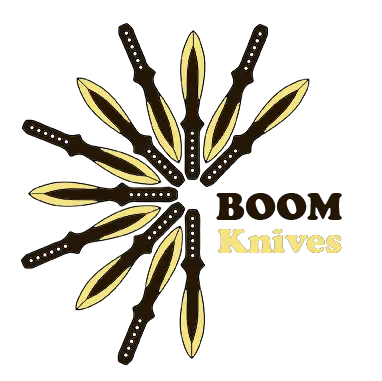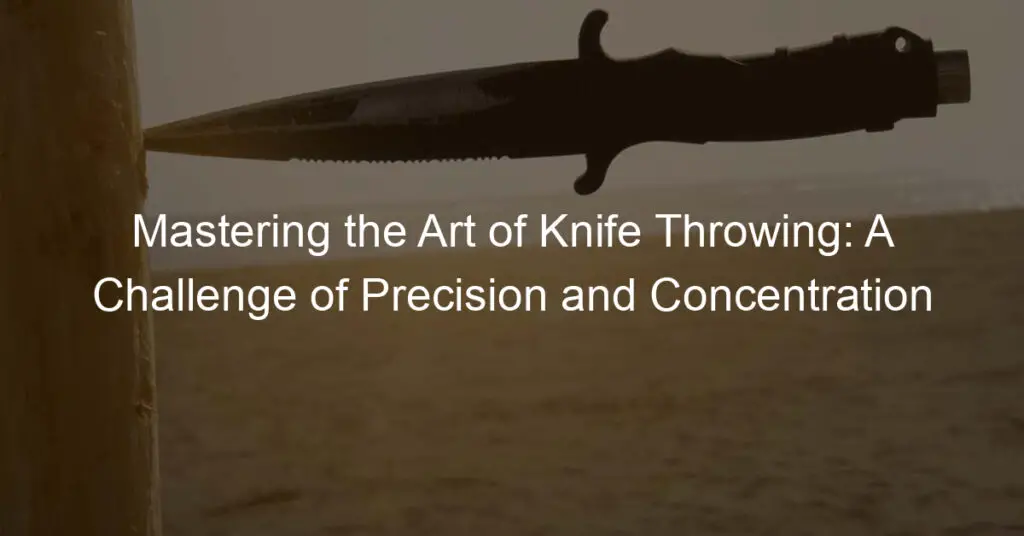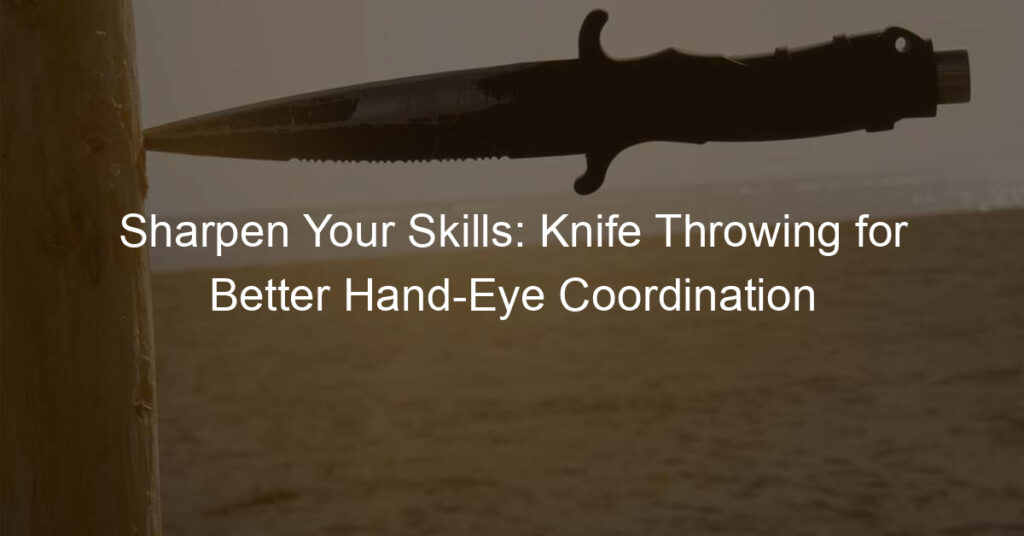Knife Throwing
A thrilling sport that combines precision, concentration, and skill. Whether you’re a beginner or a seasoned thrower, this guide will provide you with the necessary knowledge to understand and appreciate this unique art form.
-
- Art of Knife Throwing
It’s an art form that requires a deep understanding of the dynamics of a knife. It’s not just about throwing a knife at a target; it’s about understanding how the knife moves in the air, how it rotates, and how it interacts with the target. This understanding is what separates a novice thrower from a seasoned one. It’s not just about strength; it’s about finesse and control.
Without precision, your knife won’t hit the target accurately. And without concentration, you won’t be able to maintain consistency in your throws. Precision comes from practice and understanding how the knife behaves. Concentration, on the other hand, comes from mental discipline and focus. It’s about blocking out distractions and focusing solely on the target.
Mastering Knife Throwing
Essential Knife Throwing Techniques
-
- Choosing the Right Knife
Not all knives are suitable for throwing. The right knife should be balanced, with the weight equally distributed between the blade and the handle. It should also be made of durable material to withstand the impact of throwing. The length of the knife should be between 12 to 16 inches. A shorter knife can be difficult to control, while a longer one can be too heavy for a beginner.
-
- Perfecting the Grip
There are two main grips in knife throwing: the hammer grip and the pinch grip. The hammer grip is where you hold the knife like a hammer, with your fingers wrapped around the handle. The pinch grip is where you pinch the knife between your thumb and index finger. The grip you choose depends on your comfort and the type of throw you want to execute.
-
- Mastering the Throw
Your arm should move in a smooth, fluid motion, like a whip. The release point is when you let go of the knife, and it should be at the same point in each throw. The follow-through is the continuation of your arm movement after the release. It helps maintain the momentum and direction of the throw.
Improving Knife Throwing Skills
-
- Practicing Regularly
It’s recommended to set aside a specific time each day for practice. This not only helps in developing muscle memory but also in refining your technique.
-
- Learning from Professionals
They can provide you with tips and tricks that you may not find in books or online tutorials. Consider attending workshops or enrolling in a knife throwing class. You can also find many instructional videos online from reputable sources.
-
- Participating in Knife Throwing Competitions
They expose you to different throwing techniques and styles, helping you to broaden your knowledge and improve your own technique. The competitive environment can motivate you to practice more and aim for perfection.
Focus in Knife Throwing
Developing Concentration
-
- Techniques for improving focus
This involves staying present and fully engaged in what you’re doing, without letting your mind wander. Another technique is visualization, where you mentally rehearse your throws before you make them. This can help you anticipate any challenges and plan your actions accordingly.
-
- Role of meditation in enhancing concentration
It trains your mind to focus on one thing at a time and ignore distractions. Regular meditation can improve your mental clarity, reduce stress, and increase your focus. A simple way to start is by focusing on your breath. As you inhale and exhale, try to keep your mind from wandering. With practice, you’ll find it easier to maintain focus during your knife throwing sessions.
Knife Throwing Training
It’s not just about throwing a knife; it’s about understanding the dynamics of the throw, the weight of the knife, and the distance to the target. In this section, we will delve into the world of professional knife throwing and how you can train under expert guidance.
Professional Knife Throwing
It involves a deeper understanding of the sport and a commitment to mastering the skills required. There are two key aspects to becoming a professional knife thrower: training under professional guidance and understanding the rules of the game.
- Training under professional guidance: They have years of experience and can provide valuable insights that you might not get otherwise. They can help you understand the nuances of knife throwing, like the correct grip, the right throwing technique, and how to adjust your throw based on the weight of the knife and the distance to the target. Training under a professional also ensures that you learn in a safe environment, minimizing the risk of injury.
- Rules of professional knife throwing: These rules govern everything from the type of knives that can be used, the distance from the target, the scoring system, and safety measures. Understanding these rules is crucial if you want to participate in professional competitions. With the right training and understanding of the rules, you can master this art and maybe even compete at a professional level.
Knife Throwing Tips
Expert Advice
-
- Choosing the Right Target
A good target should be made of soft wood, which allows the knife to stick easily. It should be large enough to safely catch the knives and should be placed at a safe distance. The standard distance between the thrower and the target should be at least 10 feet.
-
- Perfecting the Stance
Stand with your feet shoulder-width apart, with your non-throwing foot slightly forward. Keep your body relaxed and your eyes focused on the target. Consistency in your stance can lead to improved accuracy over time.
-
- Improving the Aim
Visualize the path the knife needs to take to hit the target. Start by throwing at a close distance, then gradually increase the distance as your accuracy improves. Maintain a consistent throwing motion to ensure your aim stays true.
Knife Throwing Competition
Preparing for a Competition
- Understanding the competition rules: This includes knowing the type of knives allowed, the distance from the target, scoring system, and safety measures. You can usually find these rules on the competition’s official website or by contacting the organizers directly. Not adhering to these rules can lead to disqualification, so it’s worth spending time to understand them.
- Practicing under competition-like conditions: To prepare effectively, try to replicate the competition conditions as much as possible during your practice sessions. This means using the same type of knives, standing the same distance from the target, and even scoring your throws. This will not only help you get used to the competition environment, but it will also allow you to identify and work on any weaknesses in your technique.
Precision in Knife Throwing
Importance of Precision
-
- Role of precision in scoring
Scoring in knife throwing is primarily based on precision. The closer your knife lands to the center of the target, the higher your score. For instance, in most competitions, hitting the bullseye can earn you up to 5 points, while a throw that lands on the outer rings might only get you 1 point. This scoring system emphasizes the importance of precision in knife throwing.
- Techniques to improve precision
-
- Consistent Grip: Hold the knife the same way each time you throw. This consistency can help improve your precision.
- Focus on the Target: Keep your eyes on the target. This can help guide your throw and increase your accuracy.
- Practice Regularly: The more you practice, the better your precision will become. Start with a close target and gradually increase the distance as your precision improves.
Knife Throwing Safety Tips
Ensuring Safety
-
- Choosing a safe location
First and foremost, you need to choose a safe location for knife throwing. This should be an open area, free from any obstructions and away from people and pets. The area should also have a solid backdrop, like a wooden board or a brick wall, to catch any missed throws. A safe location not only protects you but also those around you.
-
- Using the right equipment
Always use knives specifically designed for throwing. These knives are balanced and designed to be thrown safely. Using a regular kitchen knife, for example, can be dangerous as they are not designed for this purpose. Also, ensure that your knives are in good condition, with no loose parts or sharp edges that could cause injury.
-
- Following safety guidelines
This includes standing a safe distance from the target, not retrieving your knife until you’re sure all throws are complete, and never throwing a knife when someone is downrange.







